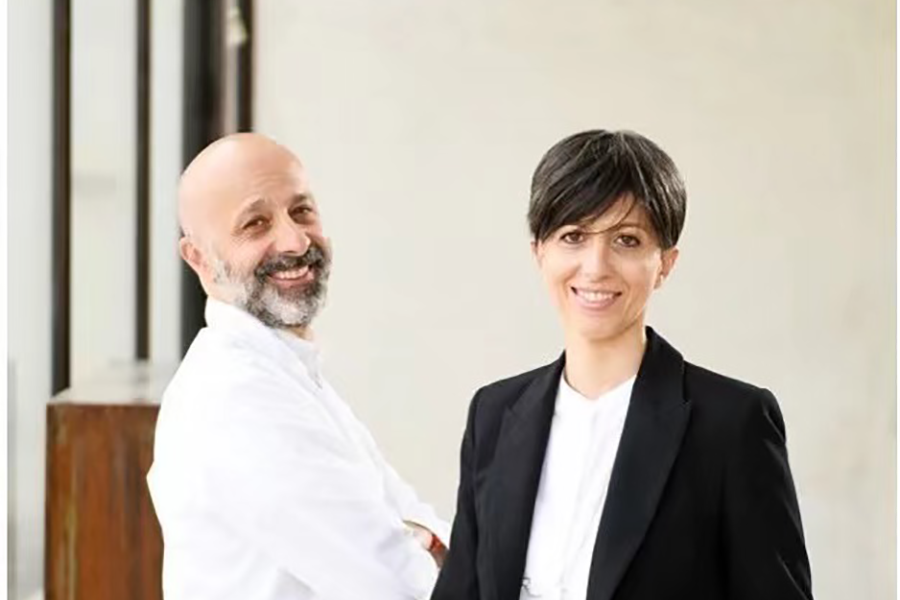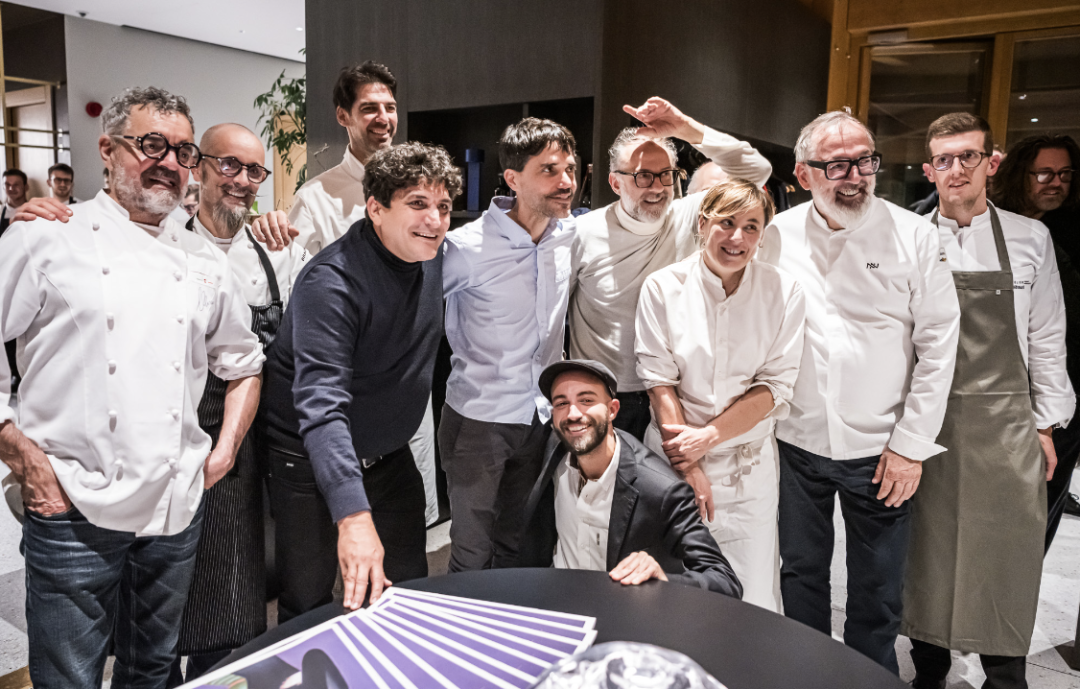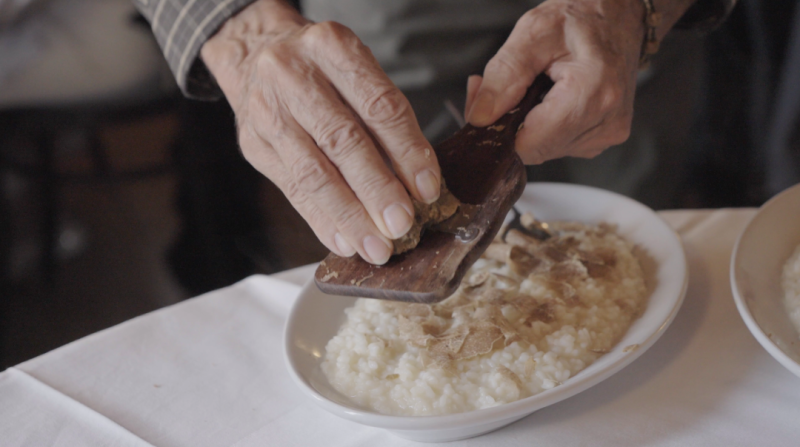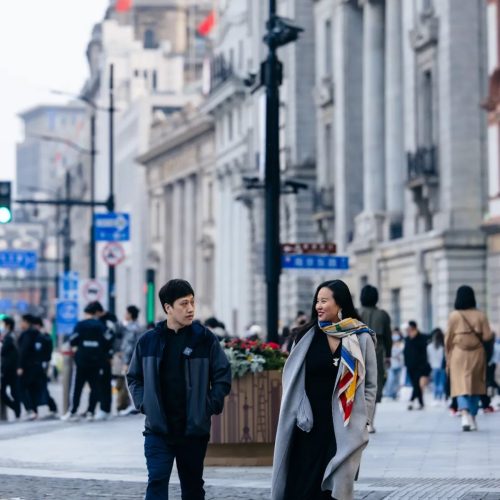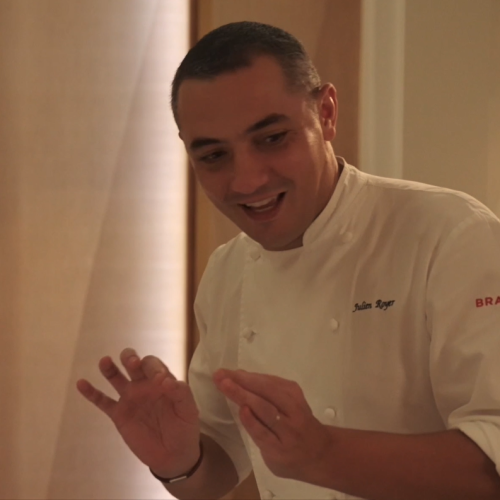It’s been over three years since I last visited Reale, a celebrated restaurant situated in the remote town of Castel di Sangro nestled in the mountains of Abruzzo in central Italy. It is not a tourist town and takes about 1.5 hours driving from Naples. It is interesting that a world-famous three-starred Michelin restaurant is housed in a time-honoured 16th century monastery.

Chef Niko Romito’s surging presence around the world started recently through a collaboration with Bulgari hotels. Before that he was very low-profile and a bit mysterious, but the truth is he already received three Michelin stars when he was only 39 years old in 2013. He is a self-trained chef and because of this his cuisine initially received mixed reviews.
His three-starred Michelin restaurant, Reale, ranks 15th in the World’s 50 Best Restaurants 2022 list. Much like a hermit dwelling in a 500-year-old monastery, the restaurant brings a minimalist Italian aesthetic to the forefront, which makes it all the more enchanting. Having partnered with Bulgari hotels, he has set sail for the world: Milan, Shanghai, Beijing, Dubai and Paris – next openings Rome and Tokyo– securing seven stars all together if counting the two in Dubai. He reinvents contemporary Italian classic cuisine for the Bulgari restaurants where the menu expresses the culture, elegance, vitality and what it means to be「Made in Italy」.
Minimalism at Reale
In Reale’s dining room, eight sets of wooden tables and chairs are spaciously arranged against the original grey floor tiles of the monastery, accented by chalk-white tablecloths and surrounded by dappled soft-cream walls. Dining here is like riding back in time to the 16th century where you are instantly immersed in the thickness of history.
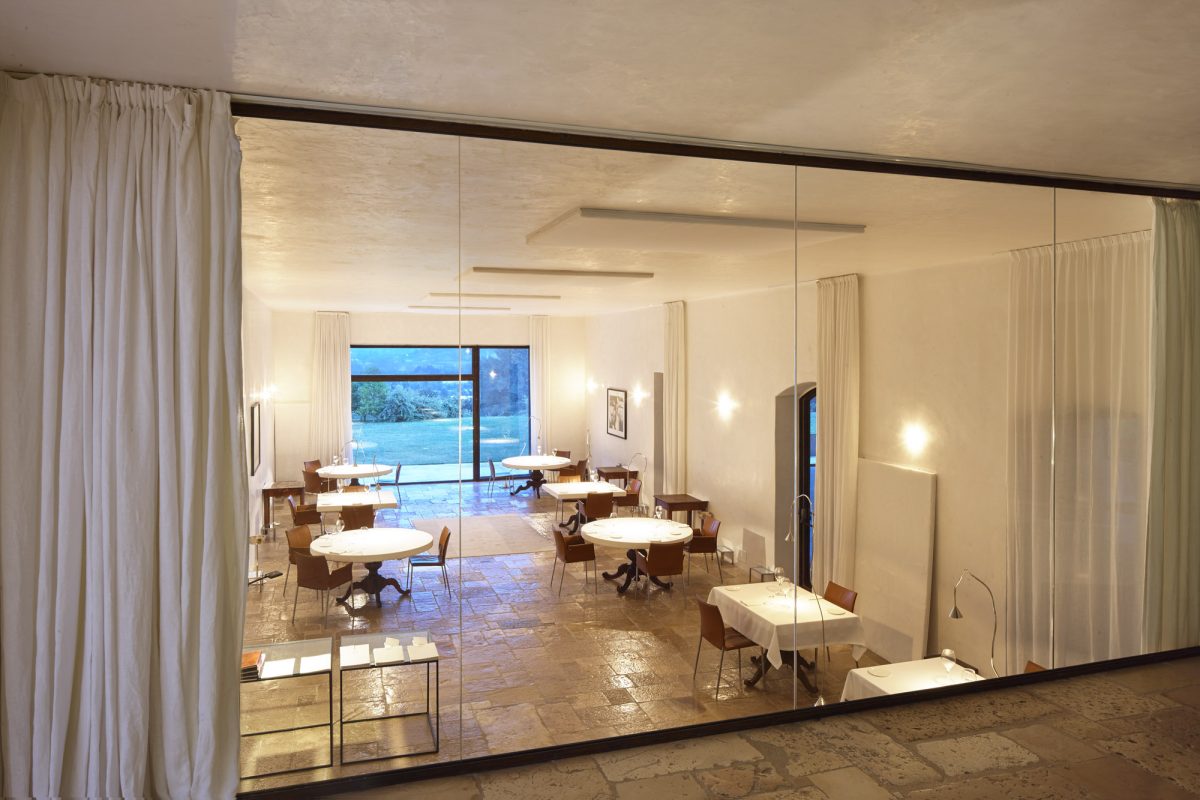

Romito deploys sophisticated techniques like pressure cooking to preserve the best flavours of the ingredients as he combines complexity with elegance in his deceptively simple dishes. I truly admire his ability to have established his distinct style in today’s French-influenced culinary world.
You can see different landscapes from each window. The room I stayed at Casadonna was the very same room Romito previously lived in. Facing the same direction as the floor-to-ceiling windows in the dining room, the windows in my room offered a charming view of the unspoiled nature and beautiful landscapes of the surrounding hills. One must be broad-minded if he/she gets to see this every day.


Vegetable tasting menu
Romito said, “Original flavours of the ingredients are their true value and their most powerful language, and the challenge for chefs is to present these to people through cooking.” The choice to reopen Reale at the end of March with a tasting menu dedicated to vegetables is the result of a creative process born 20 years ago.
“This year I realized more than ever that vegetables are those in which our creativity is expressed almost spontaneously, and vegetables have a tapestry of colours, tastes and flavours with gustatory hues that other ingredients lack.”Romito also told me that he had been thinking about vegetable dishes for a long time and that Covid had given him the courage to make this happen. The vegetable menu was almost a natural choice, “Once I created a dish, a dish that was new to me, that I had never eaten anywhere before, for me it meant a new energy, a new life.”

Started with an airy freshness of spring and moved on to the bitterness of summer, the tasting menu represents Romito’s research of the vegetable world which strives to experiment new possibilities of flavour combinations. He said this menu may not be loved by everyone, and I knew what he meant by that because many flavours were completely new experience even to me.
The sweet and rich Green Peas Ice Cream featured peeled fresh green peas which created a much richer texture and were further enhanced by green peas extract. This was followed by fine slices of carrot arranged like a flower and slightly caramelised to contrast the carrot puree with broth underneath that carried a salted black olive taste. A breezy start.
The bread placed at the center of our table was the star of the night. It’s recognised as one of the most influential breads in Italy, if not the most influential.


The Roasted Savoy Cabbage, created by Romito in 2016, is a dish that is not immediately recognisable from its appearance. The caramelised puree on top was actually sautéed cabbage leaves, while the fibrous underside was cabbage core. The cabbage was first roasted and seasoned with salt, wine and vinegar before being aged, steamed and thinly sliced to add flavour and complexity. The texture might strike a Chinese as it is similar to that of suancai or lacto-fermented cabbage produced in Northeastern China. This purely plant-based main course reflects an inventive combination of elaborate preparation and local tradition, boasting elegant flavours and fibrous texture mixed with a hint of distilled anise.

After watching a video of how the dish was made, I have to say that the complex work required for such a minimalist presentation was beyond my imagination.
As one of the starring dishes of the menu, the Broccoli Leaf and Anise saw a green leaf quietly dressed in a coffee-coloured sauce, giving an intense contrast in colour and speaking proudly of Romito’s idea of using “whole food” as he wouldn’t want any part of the vegetable to go to waste. The broccoli leaf, which we normally discard when we cook, was marinated in a brine and brushed with broccoli extract and anise. Marination is one of Romito’s favourite preparation methods.

Roasted in salt and thinly sliced, the celeriac had a slightly crisp exterior and was underlain by a rich hazelnut cream with cardamom extract for a delightful accompaniment.
Romito’s dishes would make you think, especially for those who love cooking, “How did he make all these happen?”
The Radicchiowas wrapped in foil and baked until soft. It had a base made from peanut butter and peanut water. The bitterness of radicchio extract was a bit strong initially, but when tasted together with the peanut sauce, it was both a contrast and a complement.

The Fusilli with Chicken, Rosemary and Green Pepper Powder was sharp in style as with the tomato capellini I’ve had. The pasta had all the flavours fully absorbed and yet remained extremely chewy, perhaps exuding a bit of exotic, irresistible curry vibe thanks to the green pepper powder and thick chicken stock.
A permanent item on the menu, the Gratinée Cauliflower was incredibly sweet and crunchy. To make the dish glossy while keeping it easy enough to grab the sauce, the top half of cauliflower was baked in the oven until turned light brownish at a high temperature and the other half was diced and baked with a drizzle of olive oil and finally beaten to a creamy texture and seasoned with salt and a few drops of vinegar. It’s completed with rosemary extract and a zesty sauce when served. By using multiple preparations for the same ingredient, Romito creates a totality that is much larger than its parts combined.

Cooking school
Romito and I talked about cooking schools three years ago, he joked that he decided to set up his own because he had never been to one. Perhaps because he was not constrained by a framework, he was able to establish his own style. Romito values giving his students real practical training at the cooking school and graduates are in high demand. “The pandemic has slowed us down in the last two years, but within a year and a half the school will be up and running. It will be open to international students and lessons will be taught in Italian and English. We are also working with academic institutions like università Sapienza di Roma, università di Milano, and Politecnico di Milano to develop increasingly important group diningsubjects and when it opens we can have only about 50 students a year because it will be customised.” he said.
Whether it’s Reale or collaboration restaurants with Bulgari, retaining top talents is essential to a restaurant’s sustainable operation, especially in the post-covid era.
Romito said, “I believe that the experience of food is much more than just the food on the plate, but about the pursuit of ambience and excellence.” He talks with confidence and intelligenceand he is always so friendly that it is almost impossible to imagine him getting angry.
At Reale, it’s evident that Romito ennobles simple ingredients through research and intuition,and even if the dishes are not understood by all people, he is always fearless in expressing his true self and genuine affection for food.
-END-
Article/Photo:Jocelyn 华姐
Cover:Niko Romito and Cristiana Romito@ristorantereale_instagram



